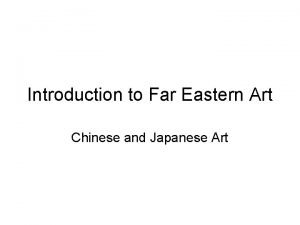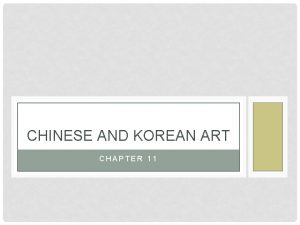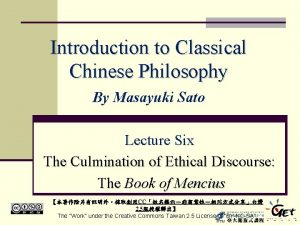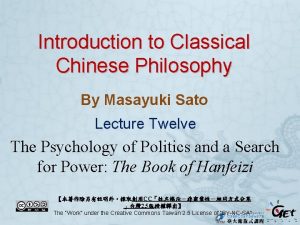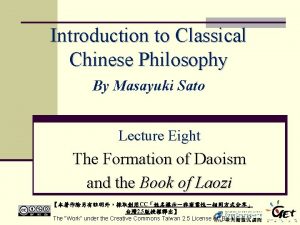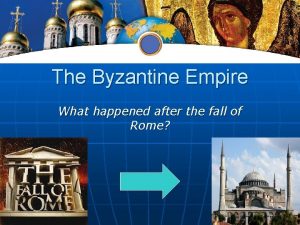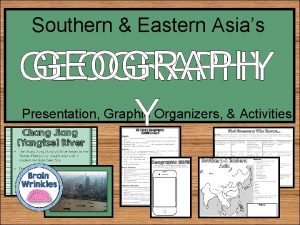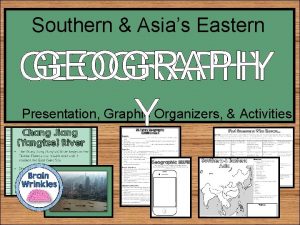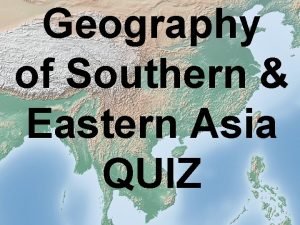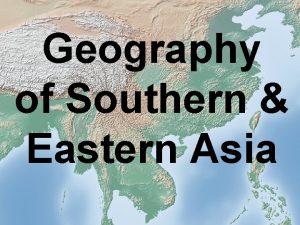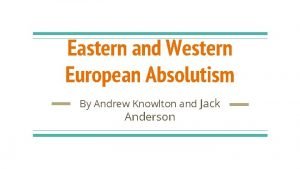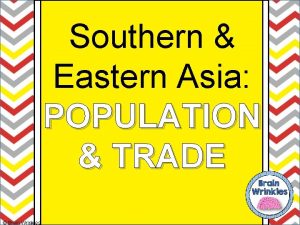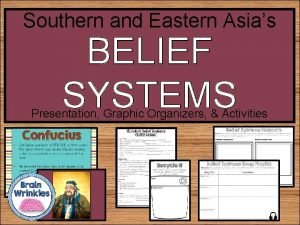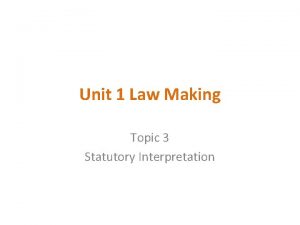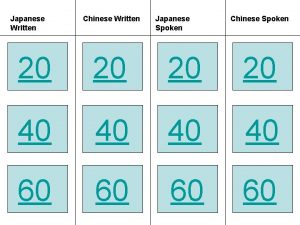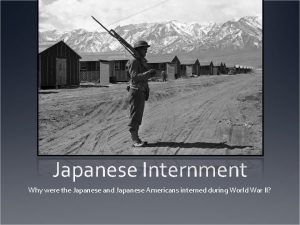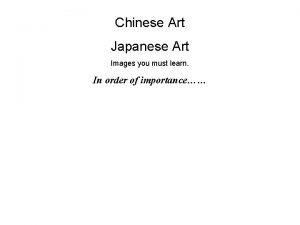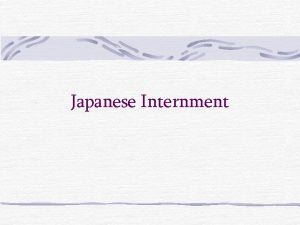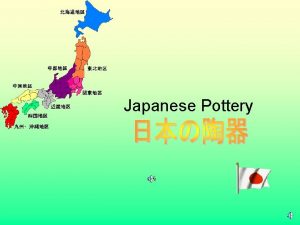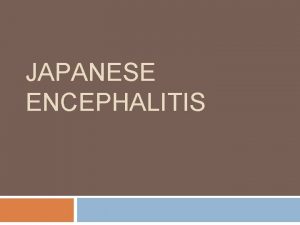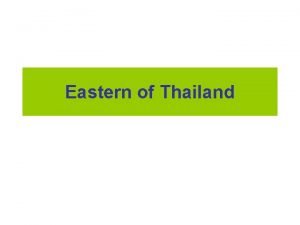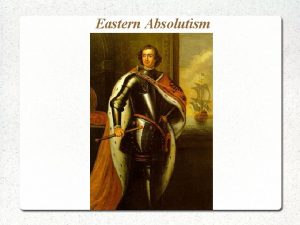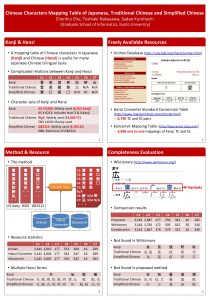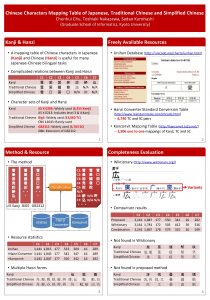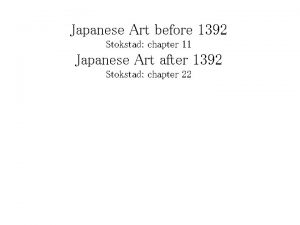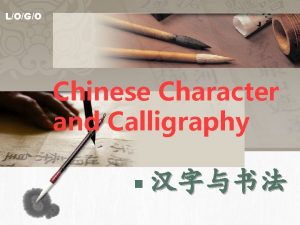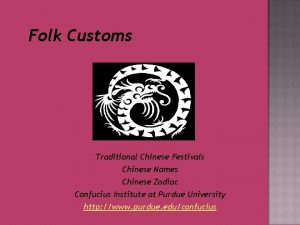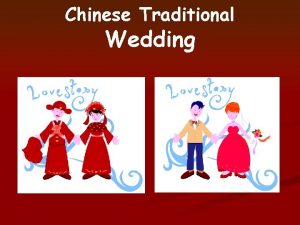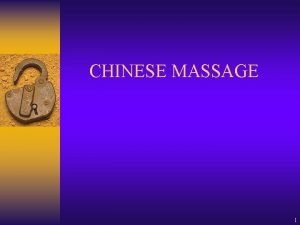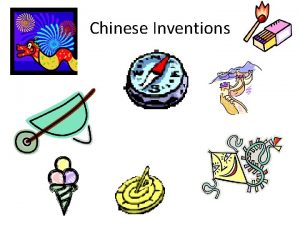Introduction to Far Eastern Art Chinese and Japanese























- Slides: 23

Introduction to Far Eastern Art Chinese and Japanese Art

Important dynasties • • • Han dynasty- 3 rd C BC to 7 th C BC Tang dynasty- 7 th C to 10 th Sung dynasty- 10 th to 13 th C Yuan dynasty- 13 th to 14 th C Ming dynasty- 14 th -17 th C

• Chinese arts are influenced by three major religions: Confucianism, Taoism, and Buddhism. • Another major influence was nature. The three major kinds of subject they liked to paint were birds, flowers, and landscapes from the countryside. • All the religions stress love for nature. • All landscape painters tried to get a feeling of the human spirit and the strength of the wind, water, mist and mountains. • Painting became an art form more than 2000 years ago then influenced the later painters.

• Chinese arts come in many different forms such as: painting, folk arts, silk, calligraphy, pottery, sculpture, metal arts and even papercuts

• Sculptures were made of many different materials: stone, jade, lacquer, wood, metal, clay, etc. • They weren’t only for admiring but they were used as everyday items like a wine bucket, mirrors, pottery, and pendants.

• Dynastic Arts • Calligraphy a very famous art form along with painting • Landscape painting very popular • Painting was no longer about the description of the visible world; it became a means of conveying the inner landscape of the artist's heart and mind.


• Fish and Rocks

Works usually monochromatic Ink on paper Extensive use of calligraphy and calligraphical brush strokes in painting too Close links between art and spirituality


Chinese Bronzes


Japanese Art • Japanese art covers a wide range of art styles and media, including ancient pottery, sculpture in wood and bronze, ink painting on silk and paper and more recently manga, cartoon, along with a myriad of other types of works of art.

Important Eras • • Kofun Period- 3 rd to 6 th C Asuka and Nara Period- 6 th -9 th C Heian Period – 9 th to 14 th Muromachi and Momoyama period- 14 th to 17 th C • Edo Period- 17 th -19 th C – Under Tokugawa empire

• Japan's first historical epoch–the Asuka period, coincides with the introduction of Buddhism into the country. • This new religion contained many ideas and images that were radically different from the concerns of native Shinto. • Along with Buddhism, other important foreign concepts and practices, including the Chinese written language, the practice of recording history, the use of coins, and the standardization of weights and measures was introduced

• Nara Period • 7 th CE

• Asuka period


During the Edo Period (1603 -1868) both the subjects and styles of painting diversified significantly as patronage broadened to include a newly affluent merchant class. painting of contemporary urban life, new subjects and styles influenced by a limited importation of European art, and work by artists who based their lives on Chinese scholarly ideals flourished.

• Very important for woodcuts • Influenced Western Art Movements like Post Impressionism • Artists like Vangogh and Gauguin highly inspired by them • Bright and colorful • Extensive use of yellow

Edo Period


 Far eastern art
Far eastern art An elementary school classroom in a slum by stephen spender
An elementary school classroom in a slum by stephen spender An elementary school classroom in a slum poem analysis
An elementary school classroom in a slum poem analysis In a kingdom far far away
In a kingdom far far away Far far away city
Far far away city Anglo chinese school chinese name
Anglo chinese school chinese name Chinese and korean art
Chinese and korean art Medieval japan art
Medieval japan art Introduction to classical chinese philosophy
Introduction to classical chinese philosophy Introduction to classical chinese philosophy
Introduction to classical chinese philosophy Introduction to classical chinese philosophy
Introduction to classical chinese philosophy What happened after rome fell
What happened after rome fell Brain wrinkles southern and eastern asia
Brain wrinkles southern and eastern asia Brain wrinkles southern and eastern asia
Brain wrinkles southern and eastern asia Electa in the bible
Electa in the bible Eastern and western hemisphere
Eastern and western hemisphere Southern and eastern asia physical features answer key
Southern and eastern asia physical features answer key Southern and eastern asia physical features map
Southern and eastern asia physical features map Andrew knowlton
Andrew knowlton Se asia geography cloze notes 1
Se asia geography cloze notes 1 Brain wrinkles southern and eastern asia
Brain wrinkles southern and eastern asia Se asia's belief systems cloze notes 1 answer key
Se asia's belief systems cloze notes 1 answer key What change took place in hinduism during the gupta empire?
What change took place in hinduism during the gupta empire? Fisher v bell literal rule
Fisher v bell literal rule
